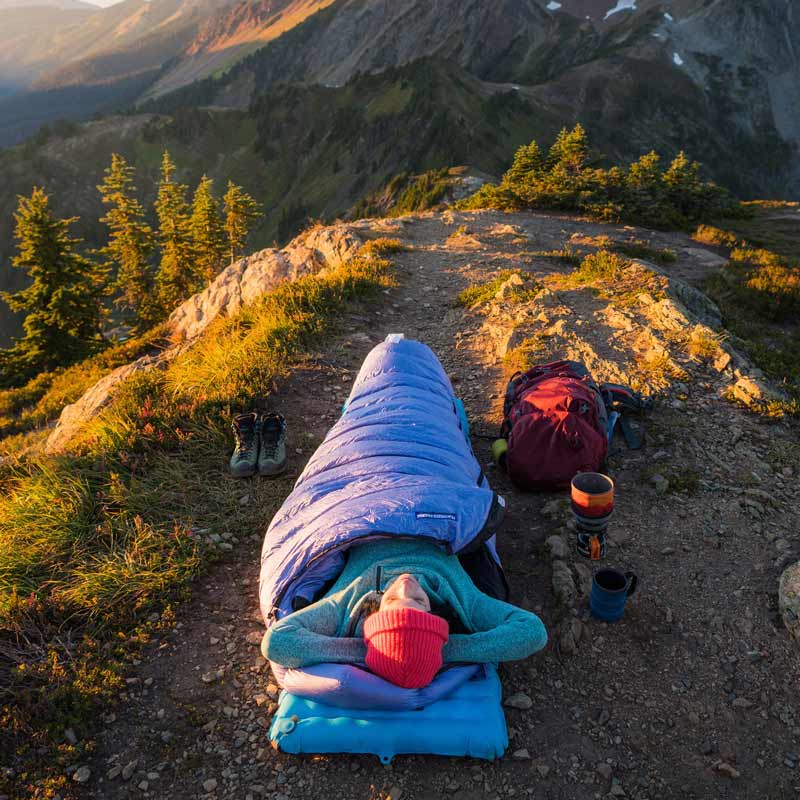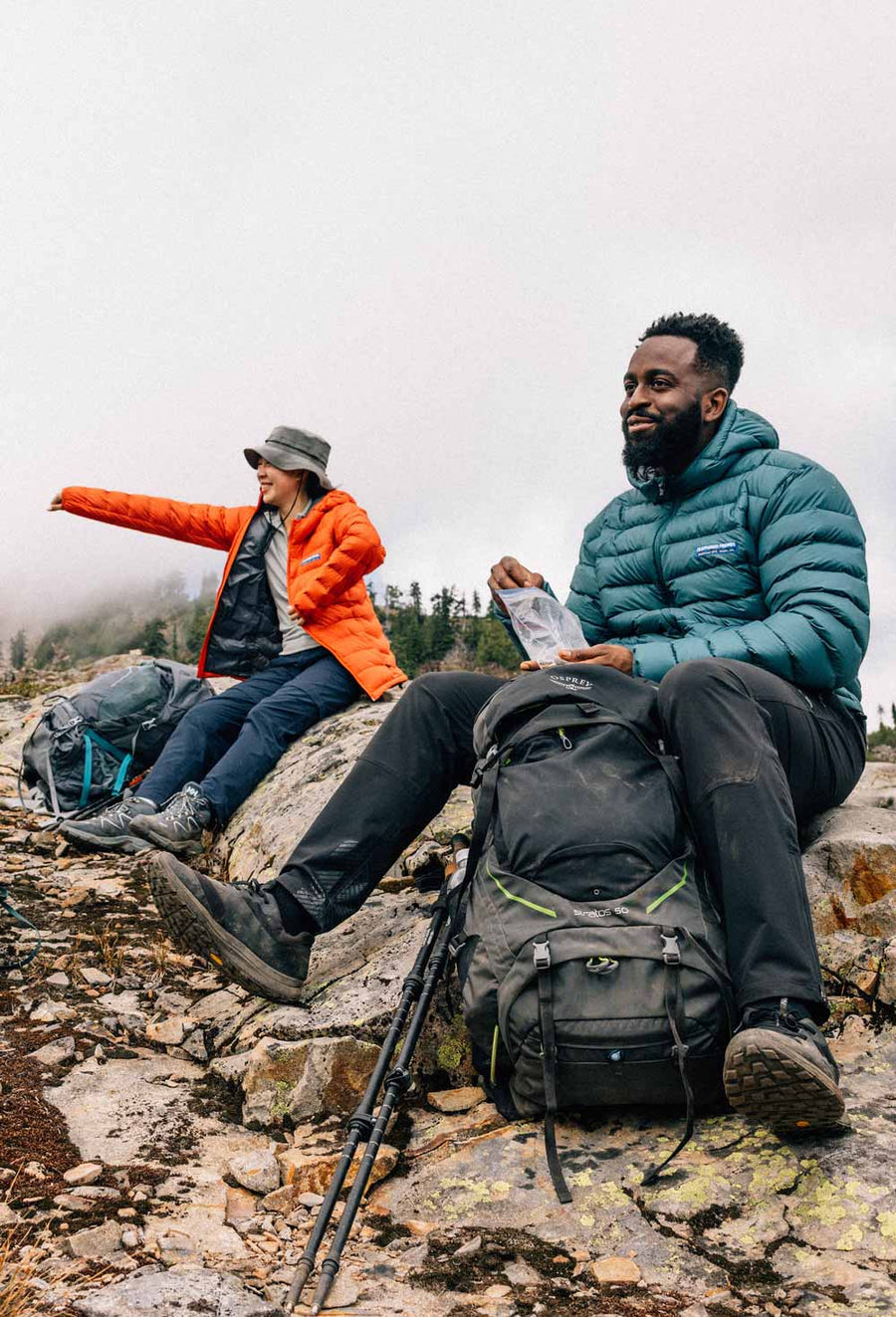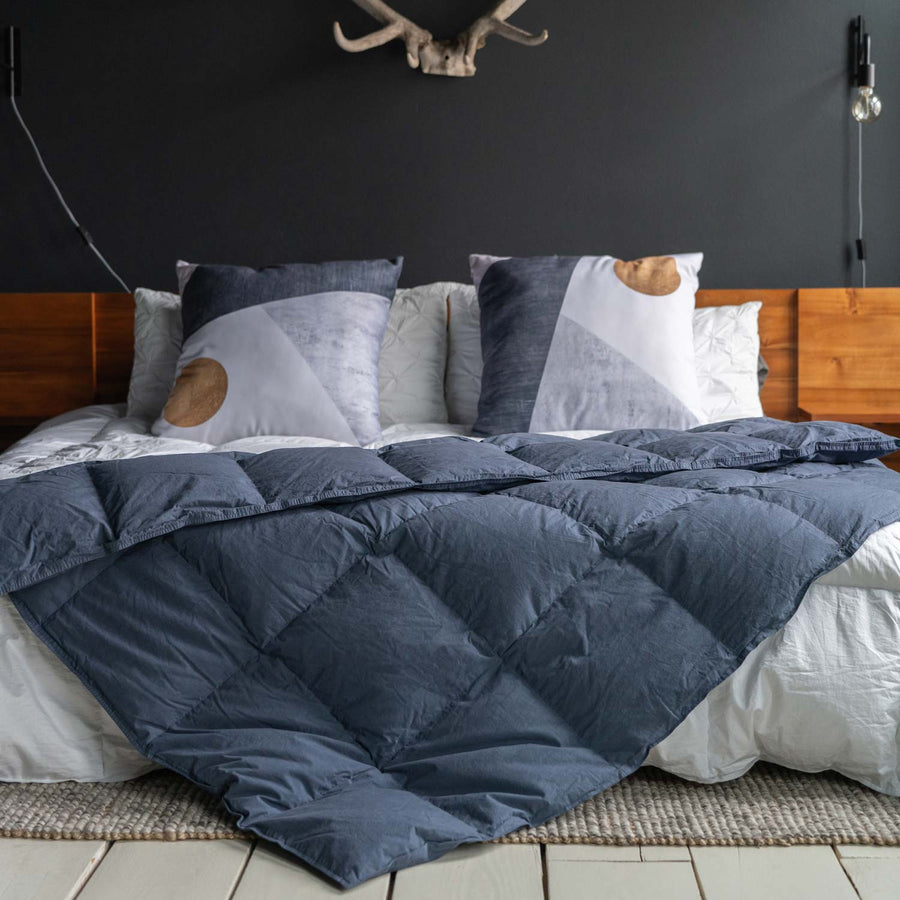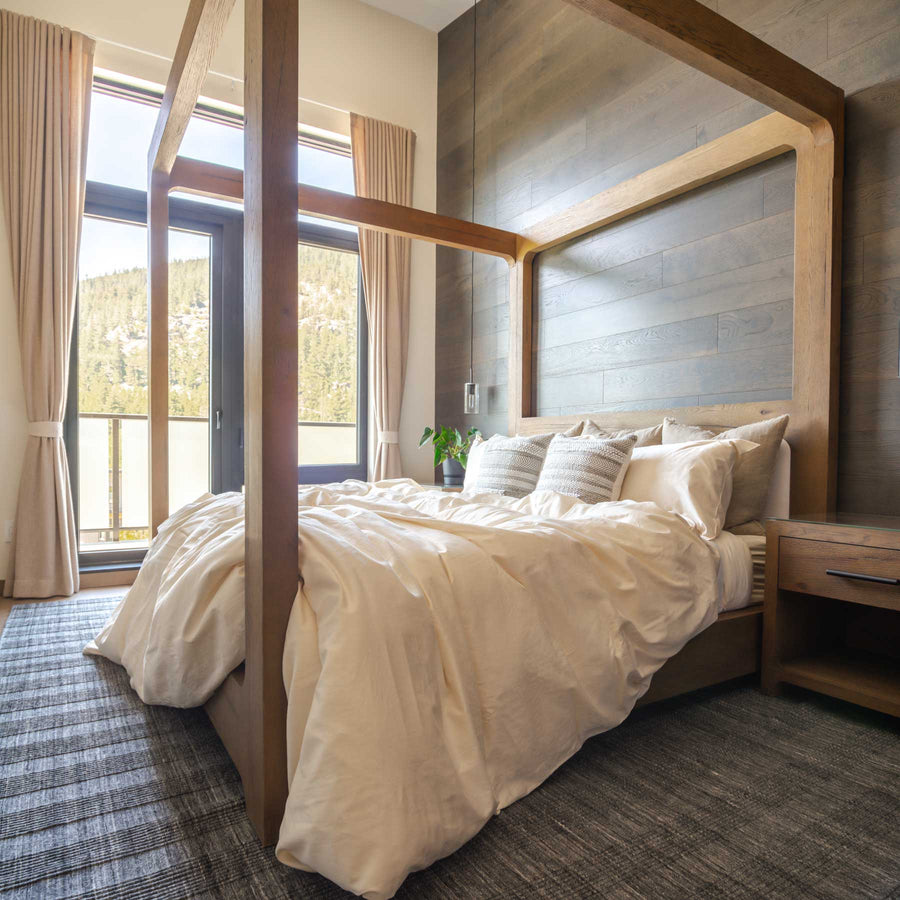Waiting on Fairweather | Committed
[youtube=http://www.youtube.com/watch?v=zRu30RmlZg0&w=640&h=480]
Waiting on Fairweather
Follow Mark and Janelle Smiley as they pursue climbing the Fifty Classic Climbs of North America.
Words by Mark Smiley
In June we headed for Mt. Fairweather (15,325′), located a mere 13 miles from the Pacific coast in SE Alaska. The Carpe Ridge is the “classic” route on its South Face. This snow, ice, and rock route ascends a little under 11,000 vertical feet from the glacier camp. It’s huge! I would equate it to a remote, steeper, rockier, longer, Liberty Ridge on Rainier.
Having a third person would be safer on a big mountain like this. It would also add to the fun level and make for better filming. We recruited our friend, Jed Porter, who is a fully certified (IFMGA) mountain guide from Bishop CA, which turned out to be a very good addition to Team Smiley.
The three of us met in Juneau. Janelle and I flew from Anchorage, where we had just finished climbing the Moose’s Tooth. Jed flew from Florida, where he had just finished lounging on the beach with friends. From Juneau, we took a six hour ride on the Alaska Marine Highway ferry to Haines. There, a facebook friend’s daughter picked us up from the airport and shuttled us 10 miles to the tiny municipal airport, home of the very famous, Fly Drake charter air service.
Drake Olson has been an Alaskan bush pilot for many many years. Prior to taking climbers to remote mountains and skiers to some of the steepest powder spines in Alaska, he was a professional race car driver for Porche. Drake is pure Alaskan through and through, and a real riot. We pulled up in the truck and he was sunning himself just outside his hanger. [check out the video to see how that went down]. This airport was perfect. No TSA, no lines, no automated voice telling us that the National Security Level is, “Orange”. It was awesome. We pulled the truck right up to the plane, dumped everything out.
The sky was blue, very rare in these parts, so we wasted no time packing the plane. We had a ton of stuff. Our lofty plan was to fly into Fairweather, and after climbing it we would “bump” directly to Mt. St. Elias with a different pilot, Paul Claus. After climbing that mountain, Paul would then take us back to his lodge in McCarthy, AK. This would save a lot of transportation expenses if it worked. All that to say that we required two flights into Fairweather. Jed went first and two hours later Janelle and I flew in and joined him on the Fairweather Glacier at 4,600′. The flight in was amazing to say the least.
Experience has taught me that if the sky is blue in Alaska, and you’re not climbing, you are behind already. I was antsy. Should we start climbing right now? Forget setting up the basecamp, lets start climbing! Janelle and Jed were the voices of reason, and we set up camp, packed our climbing packs and tried to sleep. 24 hours prior, Jed was on a beach in Florida, now we were 8 hours away from climbing a 15,000’+ mountain.

4:00AM the alarm went off. The sky was still clear as we approached the base of the route. The long Alaska summer day had already begun. The first section of the route took us right under serious serac fall potential. Aside from getting an early, cold, start and moving as fast as possible, there is little one can do to mitigate this hazard. Above that there was some loose rock climbing (5.3), a little waterfall crossing, and then back on a long snow ramp.

The Crust
This snow ramp was horrible. Breakable crust FOREVER. The crust was strong enough to hold our weigh for exactly .46 seconds. Once it broke, my leg would drop into the hole, scraping my shin on the crust on the way down. Sometimes sinking up to the shin and sometimes up to my hip. Time and time again, step after step, it went like this.
1. Lift foot out of previous hole, step forward.
2. Shift weight to higher foot slowly, staying on the surface.
3. Have time to think half of this thought, “hey I think its getting firmer”
4. Break through up to shin, knee, hip, waist.
5. Repeat steps 1-4 a billizon times, up 3,000 vertical feet
There was another steep rock band with some fun challenges, both low angle ice and some proper rock climbing. We moved quickly though these sections as it was such a welcome relief from the breakable crust.

Around 8,000′ a steep snow ramp (approx. 35-45 degrees) took us to our high camp location at 10,200′. The sun was out in full force now and it was getting hot. We were really happy with our progress, getting from 4,600′ to 10,200′ in roughly 6 hours. At 11:00AM we had to make a decision. Set up camp, and go for the summit in the morning, or set up camp and keep going to the summit now while the sun was still out? We still had another 5,000 feet above us, and we were feeling tired, and unacclimatized, so we opted to go continue the morning. That afternoon we lounged in the tent, sleeping away our good weather.
The following morning, we were up again early. Dark clouds had moved in over the tops of the mountains in the distance. We could not see our summit yet, but figured it too was cloud capped. Maybe they would blow off? We had only brought three days of food with us, so we went for it, hoping the skies would clear.

Very quickly we climbed into the cloud and the visibility went to crap. Walking around in a gigantic ping pong ball filled with smoke is what it was like. We had our GPS app (sweetest app ever, and total game changer Gaia GPS), which helped to keep us on the ridge. Unfortunately, it was worthless at steering us clear of unseen crevasses and seracs.
Through the clouds I caught glimpses of both. Wanting to avoid them I lead the team far to the left, NW, of the Carpe Ridge to a solid, but steep snow ramp. This took forever. The snow was knee deep or worse. 98% of the time the visibility was less than 100 feet. 2% of the time the clouds would shift just enough to get a view of what lay ahead, and that keep us moving forward. We climbed a 60-65 degree snow/ice slope to gain the ridge again. Swinging my tools into the slope I thought, “this isn’t going to be very fun to descend. Too hard to down solo and not hard enough for V-threads.”

The Wind
Once on the ridge, at 14,000′, the wind picked up significantly. Gusts of 40 mph wind will knock you down, steady 40 mph wind is manageable. This was steady 40 with gusts to 60. The snow was getting picked up and blasted into our eyes. Any straps on our jackets or packs that had a loose end turned into little whips. It was full on. We kept walking uphill.
At 14,300′ we encountered the ice “Nose”. We would have to stop and belay. The wind was blasting us. Huddled in a semi filled in crevasse, squinting at each other, knowing each others thoughts. It was grim. Jed took the lead and climbed up around the corner to see if the terrain would mellow out. We knew that belaying was going to make us too cold. The terrain did not mellow, and belaying would be needed. The nail in the coffin. We descended back down a couple hundred feet to a little wind pocket eddy. The air temp wasn’t that bad out of the wind, so we sat on our packs for an hour, hoping for improved conditions.
I started thinking about how to get down. Our tracks were getting filled in. It would be difficult to backtrack. We gave it one more attempt up to the Nose, but it was futile.
Walking back down was just as epic. We couldn’t see anything in front of us. I had to walk like a drunk blind person, feeling my way inch by inch. Using my hiking pole to see if the next step was up down or flat. Nerve racking.
At 12,000 feet we exited the cloud cap, and it was actually a nice day from that elevation and below. We went from “full on survival mode” to “casual day in the mountain” simply by being able to see.
We went back to our high camp and slept. The following day we descended the remaining 5,600′, through more waist deep breakable crust, to our basecamp. At one of the rappels Janelle asked me, “do you want to try this again?” I said, “you can’t ask me that now! I need a couple days to forget about these horrible snow conditions.”
The following day was nice, yet there was still a cloud cap on all the mountains above 13,00′. After that, the high pressure moved out to make way for the infamously bad weather this area is known for.
The Wait
For 11 days we sat in our tents, killing time. Many people ask what we do to pass the time while tent bound. I think it’s probably similar to being in a nursing home. You have to turn the small everyday activities into individual major events. Things you normally do while multi-tasking (eating, pooping, grooming, etc). That, and try to sleep as much as your body will allow. For me, that is 13 hours/day. We also had an ipad, two computers, lots of movies, angry birds, some shooting game that I mastered, and a sweet Goal Zero battery and solar set up to keep the juice flowing.

Unlike a nursing home, we had a finite amount of food…oh, and we were not forced to drink cranberry juice.
Everyday there was at least an hour or so to get out and walk around. I skied “crop circles” into the fresh snow around our camp, breaking trail in an ever growing circle, lap after lap until it looked like a circular plowed bean field. Then it would snow, effectively shaking my giant etch-a-sketch, and I would do it again, making a fun new shape.
Fair Weather



Day 14 on the glacier we started walking uphill again. We were well rested after 11 days in the tent (understatement). We reached the same high camp at 10,200′. Day 15 we climbed to the summit under some of the most perfect conditions that mountain might ever get. We could see all the way up and down the coast. We could see St. Elias to the north, Glacier Bay to the southeast, and I think we might have got a glimpse of Russia. I’ll have to confirm that with Tina Fey of course.

The summit was amazing. We topped out eight hours after leaving our high camp. In hindsight, it was a really good we had not tried to push it any higher on the first attempt because after the Nose pitch there was still a bunch of climbing to be done.
The only bummer was that we had burnt through our food supplies, and Paul Claus was not willing to fly anyone into the range without at least two weeks of food. St. Elias would have to wait. Drake picked us up on day 16, and 45 minutes later we were back on the warm asphalt in front of his hanger, sunning ourselves, talking climbing, and eating cheesy quesadillas.
——————-
Stay tuned for more amazing videos from Mark & Janelle Smiley! Big things are coming for 2014…
The post Waiting on Fairweather | Committed appeared first on Expedition Tales.








Leave a comment